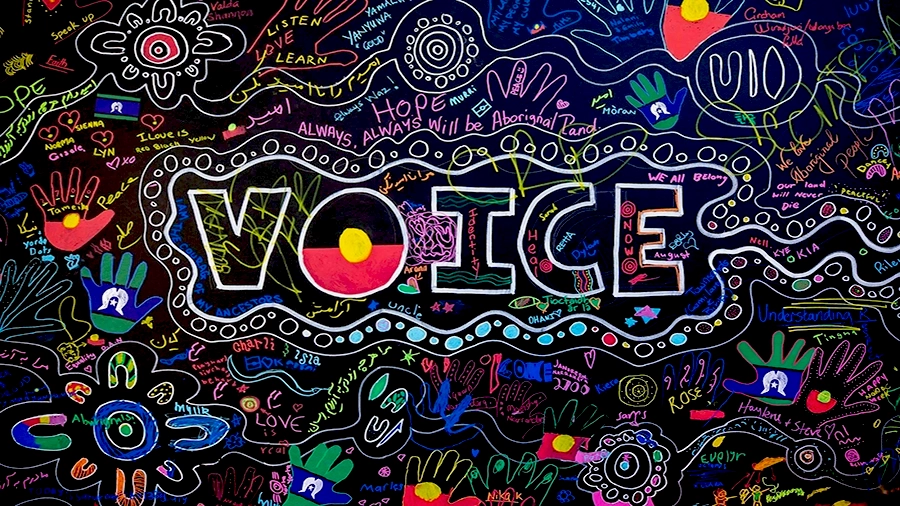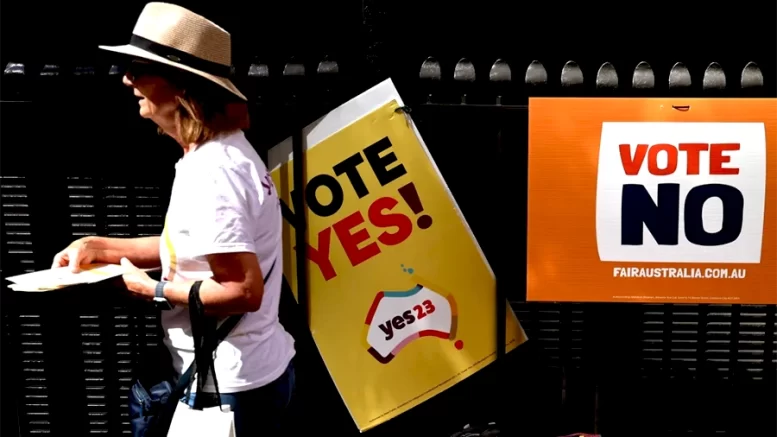Contributed by Joe Montero
The result of the Voice referendum was an overwhelming no. This isn’t a disaster. Little was really riding on it. Whichever way it fell wasn’t going to make much difference to the reality of the growing gap between First Nations peoples and everyone else. It wasn’t going to change the world’s highest rate of imprisonment, one of the highest rates of suicide, and deaths in custody. It wasn’t going to change the lack of opportunity, the health crisis, and more.
Al of this has continued to get even worse during the referendum campaigning. Both main camps ignored it. Platitudes and vague promises replaced concrete action. The First Nations movement on the ground, its activist core in connection with its people, and supported by non-indigenous Australia, was still going to be the agent for change.
A no vote has helped to clear the air. It has brought home that constitutional recognition on its own is not the path forward. An alternative path must be found. This lies in truth telling. It means Australia coming to terms with the real story of dispossession, the legacy of colonialisation, the forms of inequality, and absence of self-determination for those who have lived on this land for sixty thousand years.

Image from the Sydney Morning Herald
The division was artificial. Most people are on the same side. The main reason for this artificial division was that both official campaigns were corporate driven and gave vent to a certain amount of political opportunism. Most want a better future for our most disadvantaged part of Australia.
Governments can help. They can open the path to building solutions from the ground up and allowing communities to manage their own affairs in truly democratic ways. Governments can adequately fund needed programs.
Admitting the truth together will provide a path to building broad unity around concrete actions to overcome the gap in standard of living and future opportunities, improving health and education outcomes, ending ethe shorter life spans, the world’s highest rate of imprisonment in the world, and deaths in custody. The ongoing separation of children from their families can be stopped.
Australia must learn to listen.
The outcome of the referendum provides an opportunity to take stock and start building the conversation at a new level. A part of this means, once and for all putting aside the assimilation approach. History has provided the evidence to show it doesn’t work. A feature of both sides of both sides of the weekend’s referendum was a push towards assimilation, that is, making them more like us.
The alternative is a process driven by First Nations, moving towards an agreement with the rest of Australia. This is Treaty. Only Treaty recognises that there are both the original inhabitants and those who came later. Recognition of the fact is the foundation for change. Only then, can the two peoples stand as equals and untitled as the two essential parts of Australia.
Treaty isn’t abou6 division. It’s about building unity. It’s not about tsking away the homes and farms of non-Indigenous Australians. It’s about appropriate sharing of the wealth of this land.
And much more than pretty words are needed. The process of reaching treaty agreements with the many First Nations peoples must be tied to positive concrete outcomes. Recognised wrongs must be righted. Disadvantage must be relegated to the past. Equality must be achieved. This is how to build mutual respect and the future.


Be the first to comment on "What does the Voice referendum result mean?"